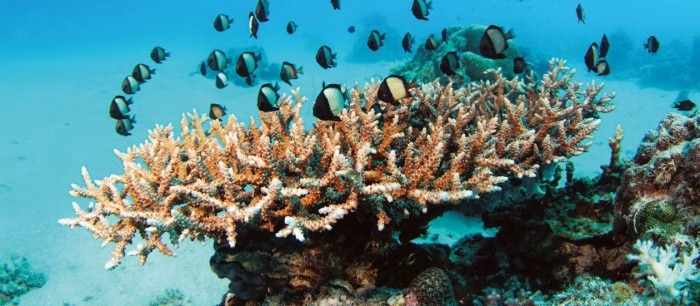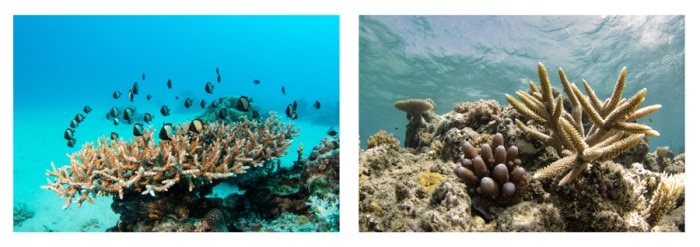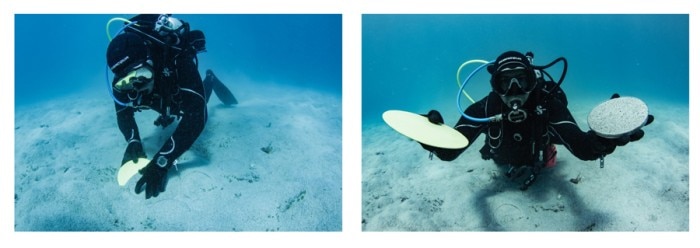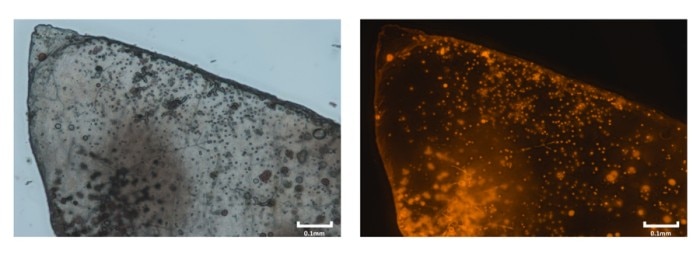MENÜ
DE | EUR
DE | EUR
Es konnten keine Ergebnisse gefunden werden.
Such-Empfehlungen

Castles Made of Sand: Coral Reefs and their Symbionts
Beyond Science
- Sustainability
- Essay
- Nature
Towering coral, vibrant with color, and teeming with life is a common image when thinking of coral reefs. Scores of fish, sharks, sea turtles, and other exotic creatures form part of these richly diverse underwater gems of nature. But, did you know that reef ecosystems such as the Great Barrier Reef (GBR) would not exist without an intricate symbiosis that evolved between corals and single-celled algae, too small to be visible with the human eye?

The expulsion of their algae transforms the coral from colorful to white – in a process that has been aptly named coral
A Nomadic Lifestyle
Unlike corals, many symbiodiniaceans can survive without their hosts for prolonged times and Cláudio is interested in this nomadic, free-living lifestyle. More specifically, Cláudio is studying a process through which free-living symbiodiniaceans can build their own protective ‘castles’ around them by making deposits of calcium carbonate. Why is this important? Well, Cláudio and his team think that the construction of this so-called endolithic stage might greatly improve the survival of free-living symbiodiniaceans and produce an endolithic seedbank in reef sands from which coral larvae and bleached coral can recruit symbionts (see figure above). Mehr erfahren
Weniger lesen

Cláudio explains “we collect our sand samples mainly by scuba diving and use onsite laboratory facilities to assess a whole range of parameters on life and freshly prepared samples.
An Acidic Ocean
If the hypothesis holds true – that the constructed endolithic habitat in reef sands acts as a temporary lodging for symbiodiniaceans – then disruption to the underlying calcification process could greatly reduce the availability of symbiodiniaceans for the establishing of symbiotic partnerships.With climate change, such a disruption may become a reality within only a few decades. “The increase in carbon dioxide in the atmosphere mean that more carbon dioxide is being absorbed by the ocean. Consequently, the ocean becomes more acidic and is known as ocean acidification.” He continues “It is predicted that by 2050 the pH will drop to a level such that sands in many coral reefs will enter a net dissolving state and this could mean that symbiodiniaceans might not be able to calcify anymore”.
Mehr erfahren
Weniger lesen

Samples undergo washing and digestion steps to access the algae that reside inside the sand grains.
Into the Field
Awarded a scholarship for his research, Cláudio journeyed to Lizard Island, Australia to study the distribution and diversity of endolithic symbiodiniaceans across different reef zones. Cláudio explains “we collect our sand samples mainly by scuba diving and use onsite laboratory facilities to assess a whole range of parameters on life and freshly prepared samples. Samples undergo washing and digestion steps to access the algae that reside inside the sand grains, followed by DNA extractions for next generation sequencing and qPCR analyses, pigment analyses, and several other analytical techniques.”Mehr erfahren
Weniger lesen
